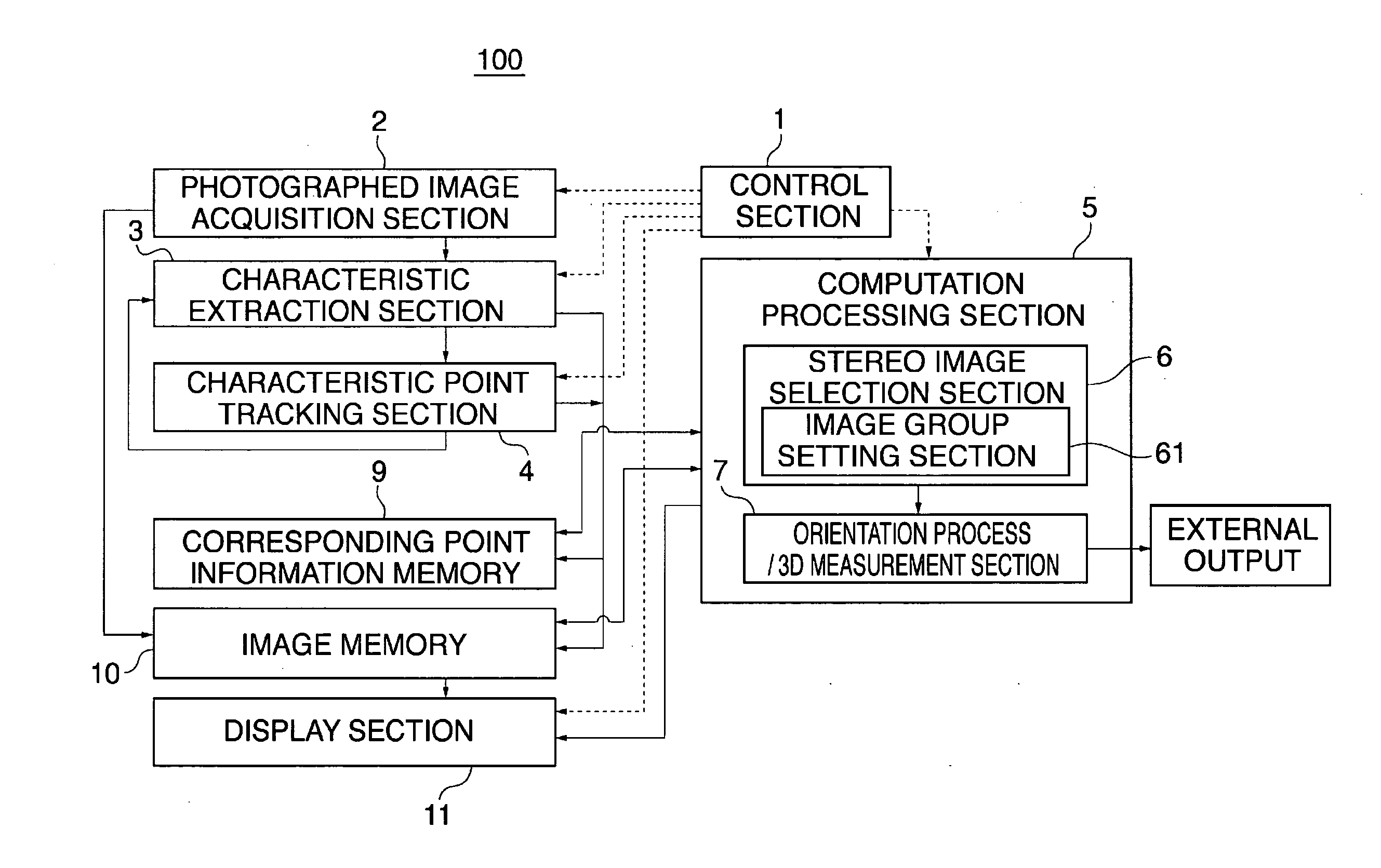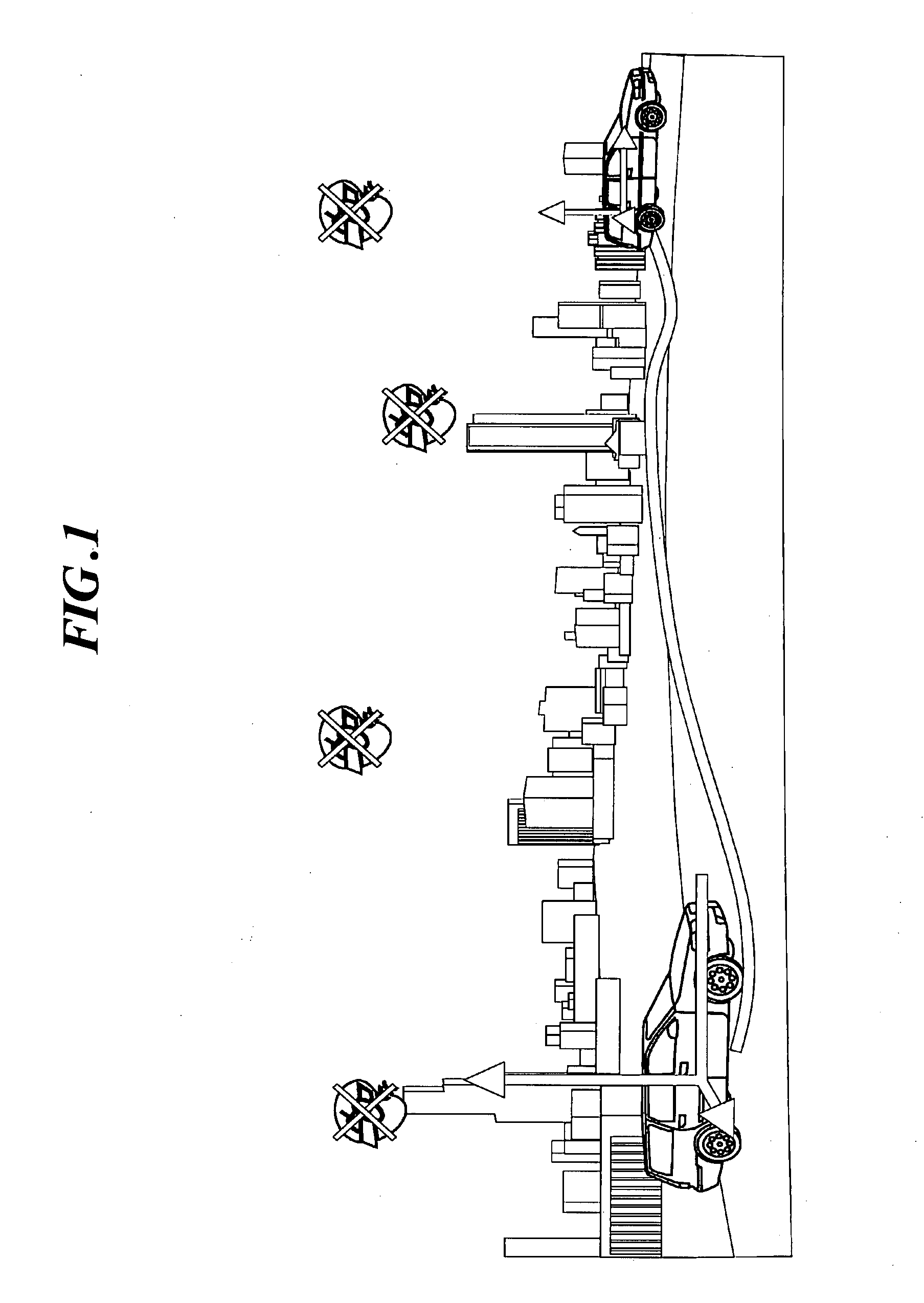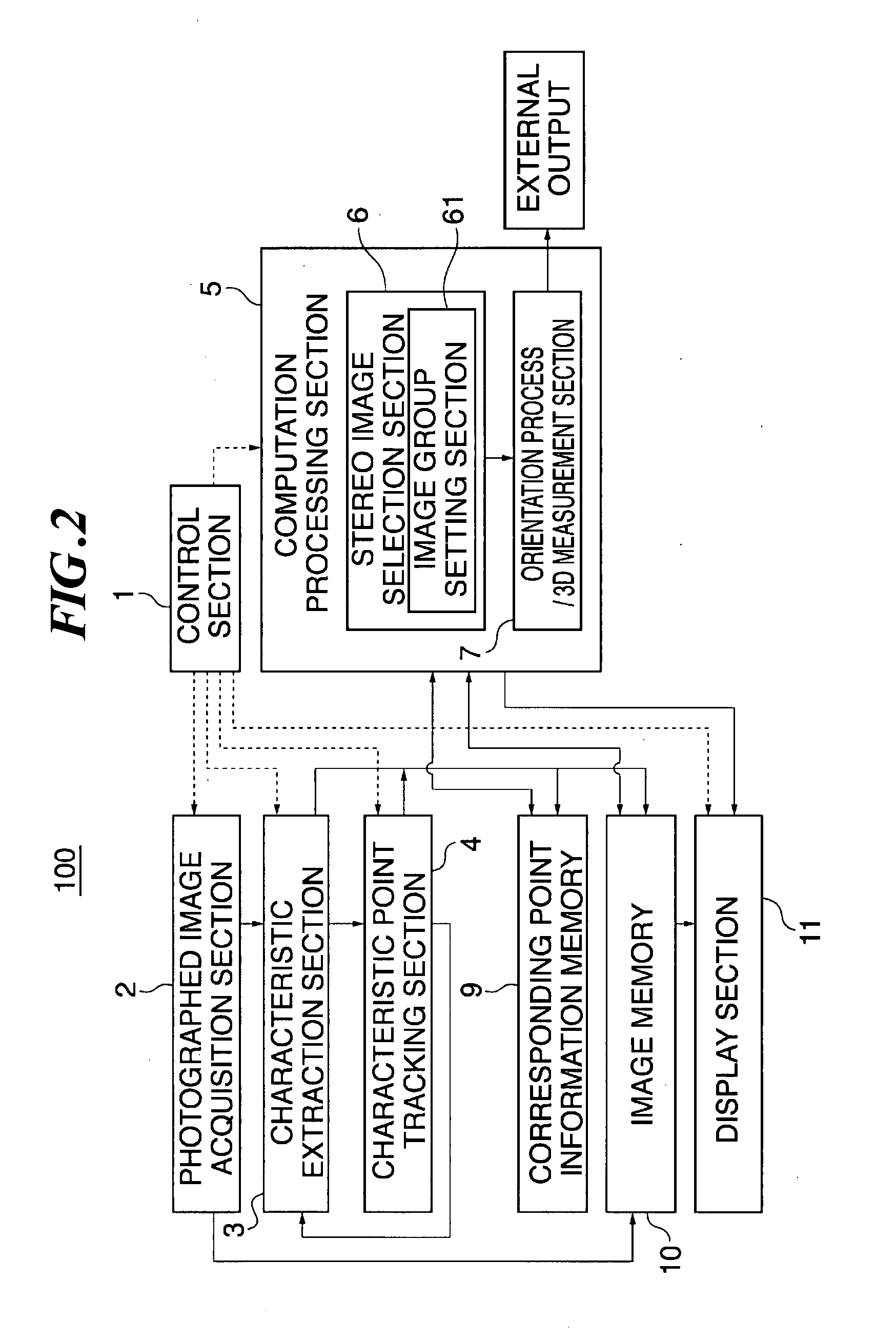Image processing device and method
a technology of image processing and processing device, applied in the field of image processing device and method, can solve the problems of inability to obtain stable images and inability to obtain solutions with stable precision
- Summary
- Abstract
- Description
- Claims
- Application Information
AI Technical Summary
Benefits of technology
Problems solved by technology
Method used
Image
Examples
first embodiment
[0046]FIG. 1 is a view for explaining the concept of this embodiment. In this example, a camera is mounted on a car to photograph the scene of a street as an object over time, or while gradually changing the position of the car, and the positional coordinates of the camera, or the tracks of the car, are obtained from the results of tracking using the plurality of photographed images. This technique enables car navigation systems to continuously display the position of the car, and more importantly complements such systems in areas where GPS radio waves cannot be received. In the embodiment described below, images photographed during drastic motion are removed as inappropriate for use to obtain the positional coordinates of the camera.
[0047]FIG. 2 shows an exemplary configuration of an image processing device 100 in this embodiment. In the drawing, reference numeral 1 denotes a control section for controlling respective sections of the image processing device 100 to enable it to fun...
second embodiment
[0096] In the first embodiment, the image group setting section groups photographed images according to the distance from the object to the photographing position, and the stereo image selection section selects stereo images from the group of images determined as belonging to one group, and specifies images photographed while the photographing position from the object to the photographing position, etc., is changing greatly, so that stereo images will not be selected from such images. In this embodiment, the image group setting section groups photographed images according to the distance from the object to the photographing position, or magnification, and the stereo image selection section selects stereo images from the group of images determined as belonging to one group. Images photographed while the photographing position is changing greatly are not actively removed. However, photographed images approximately equal in distance to the photographing position are grouped, so that st...
third embodiment
[0097] In the first embodiment, the image group setting section groups photographed images according to the distance from the object to the photographing position, and the stereo image selection section selects stereo images from the group of images determined as belonging to one group, and specifies images photographed while the photographing position from the object to the photographing position, etc., is changing greatly, so that stereo images will not be selected from such images. In this embodiment, the stereo image selection section specifies images photographed while the photographing position is changing greatly, so that stereo images will not be selected from such images. In this case, the photographed images are not grouped. However, unstable images photographed while the photographing position is changing greatly are removed before stereo images are selected. Thus, stereo images will not be selected from such inappropriate images. This embodiment is otherwise similar to t...
PUM
 Login to View More
Login to View More Abstract
Description
Claims
Application Information
 Login to View More
Login to View More - R&D
- Intellectual Property
- Life Sciences
- Materials
- Tech Scout
- Unparalleled Data Quality
- Higher Quality Content
- 60% Fewer Hallucinations
Browse by: Latest US Patents, China's latest patents, Technical Efficacy Thesaurus, Application Domain, Technology Topic, Popular Technical Reports.
© 2025 PatSnap. All rights reserved.Legal|Privacy policy|Modern Slavery Act Transparency Statement|Sitemap|About US| Contact US: help@patsnap.com



